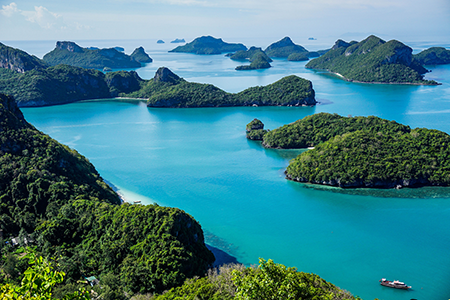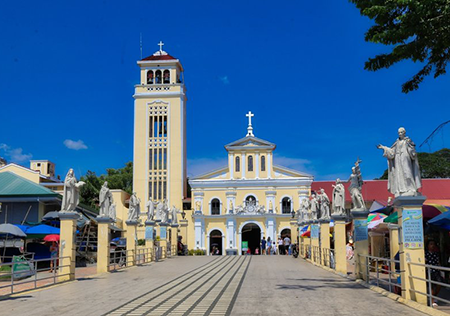| Pangasinan - Hundred Islands And A Hundred Flavors |
| 2023-08-15 08:05 |
|
Pangasinan is the third biggest province in the whole Philippine Archipelago, derived its name from salt or "asin" in the vernacular. Owing to the rich and fine salt beds which were the prime source of livelihood for the province's coastal towns, PanagASINan or "Pangasinan" which means "where salt is made" came to be its name. Its provincial capital is Lingayen. Pangasinan boasts of stretches of white, sandy beaches, verdant hills, scenic terrains, caves, waterfalls, ancient Hispanic churches, miraculous destinations for devotees, a vast coastline for fishing, water sports or leisurely walking along the Lingayen beach where one can get a glimpse of the world-famous Philippine sunset. Moreover, Hundred Islands of Alaminos City is probably the most popular tourist spot in Pangasinan. It is a group of approximately 123 islands and islets scattered over Lingayen Gulf, believed to be formed more than two million years ago. Quick facts Governor:RAMON GUICO III Vice Governor:MARK RONALD D.G. LAMBINO POPULATION:3,163,190 (As of 2020) GEOGRAPHY: Pangasinan is located on the western area of the island of Luzon along the Lingayen Gulf and South China Sea. Pangasinan territory covers a land area of 536,818 hectares which constitutes almost one-half (41.8%) of the total land area of the region and 1.8% of the total Philippine area. It is bounded in the north by Lingayen Gulf, La Union and Benguet, in the north-east, by Nueva Vizcaya, in the east, by Nueva Ecija and Tarlac in the south and Zambales and South China Sea in the west. CITY: 4 (Alaminos City, Dagupan City, San Carlos City, Urdaneta City) TOWNS/MUNICIPALITIES: 44 (Agno, Aguilar, Alcala, Anda, Asingan, Balungao, Bani, Basista, Bautista, Bayambang, Binalonan, Binmaley, Bolinao, Bugallon, Burgos, Calasiao, Dasol, Infanta, Labrador, Laoac, Lingayen, Mabini, Malasiqui, Manaoag, Mangaldan, Mangatarem, Mapandan, Natividad, Pozorrubio, Rosales, San Fabian, San Jacinto, San Manuel, San Nicolas, San Quintin, Santa Barbara, Santa Maria, Santo Tomas, Sison, Sual, Tayug, Umingan, Urbiztondo, Villasis. BARANGAYS: 1,364 LANGUAGE: The Pangasinan language is one of the officially recognized regional languages in the Philippines. Most of the people speak Ilocano rather than Pangasinan. Pangasinan is also spoken as a second-language by many of the ethnic minorities in Pangasinan. The minority ethnic groups are the Bolinao and Tagalog. RELIGION: Predominantly Roman Catholic |

